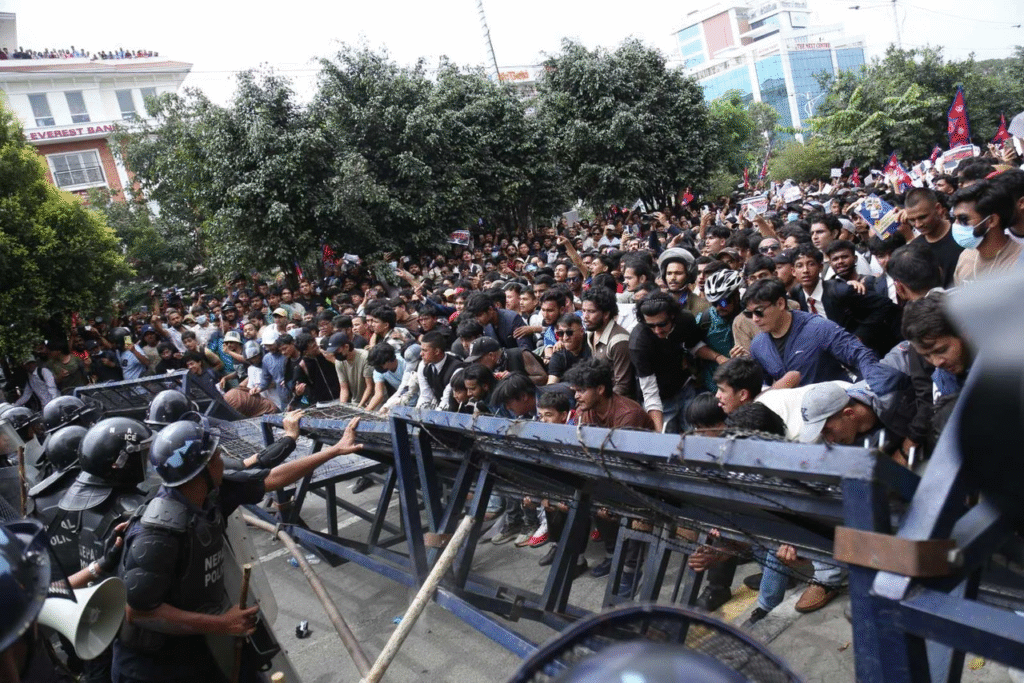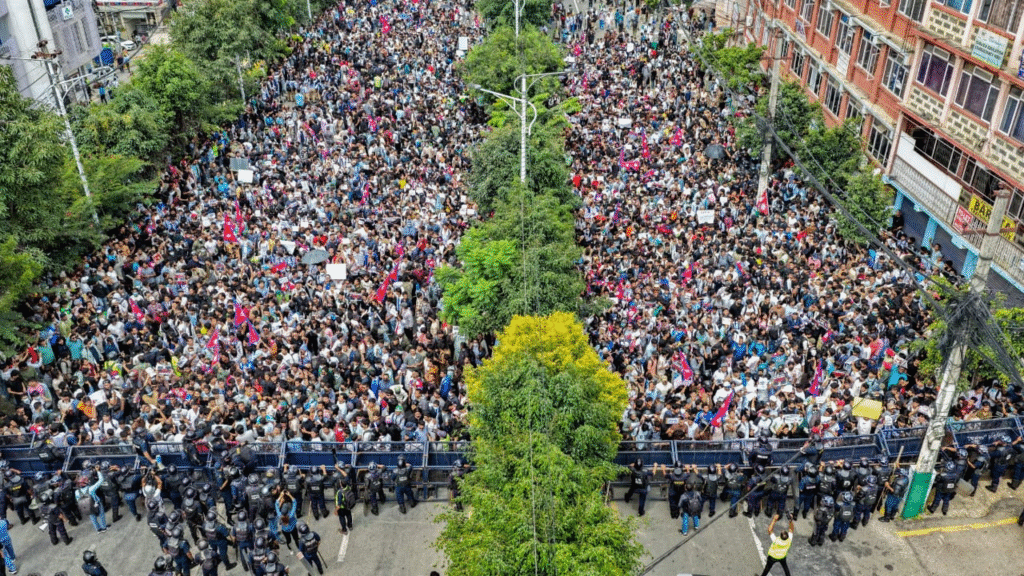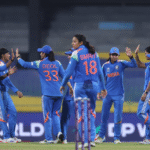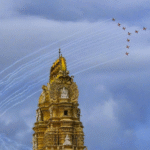Introduction
Nepal is witnessing one of its largest youth movements in decades. In September 2025, a government decision to block popular social media platforms set off a wave of protests that quickly grew into a powerful call for change. What began as anger over a ban soon became a demand for cleaner politics, honest leadership, and freedom of expression. Here is a detailed look at what happened, why it matters, and where the country stands now.
Table of Contents
Why the Protests Began
On 4 September 2025, Nepal’s government ordered more than 25 global social media platforms—including Facebook, Instagram, WhatsApp, YouTube and X (formerly Twitter)—to register locally or face a ban. When the companies did not meet the deadline, access was blocked nationwide. Officials said the move was meant to fight fake accounts and misinformation.
However, young people saw it as a direct attack on free speech. Social media is central to how Nepal’s Gen Z connects, learns, and organizes. Overnight, millions lost their main way to communicate. This sudden ban was the spark that lit a fire of frustration that had been building for years.

Deeper Reasons Behind the Anger
While the ban triggered the protests, deeper issues made the reaction so strong:
- Corruption and Nepotism – Many young citizens believe political leaders and their families benefit from public money while ordinary people struggle. Stories of lavish lifestyles and misuse of funds had already created resentment.
- Economic Pressure – Unemployment and rising prices have left many educated youths without stable jobs.
- Political Instability – Nepal has seen frequent changes in government and shifting coalitions, eroding public trust.
- Demand for Free Expression – The social media shutdown felt like an attempt to silence criticism, reminding people of past restrictions on speech.
These long-standing concerns turned a policy dispute into a national uprising.
How Events Unfolded
Protests began in Kathmandu and quickly spread to major cities. Students and young professionals organized through whatever channels they could, using VPNs and offline networks to plan rallies. Demonstrators chanted slogans like “Shut down corruption, not the internet” and carried placards demanding accountability.
As crowds grew, police used tear gas, water cannons, and rubber bullets to control them. Some clashes turned violent. Reports confirm that at least 19 people were killed and hundreds were injured. Curfews were imposed in Kathmandu, Lalitpur, and Bhaktapur. Border trade slowed, schools closed, and daily life was disrupted.
Key Dates
- Sept 4, 2025 – Government orders registration of social media platforms; ban takes effect.
- Sept 8, 2025 – Protests peak with nationwide demonstrations and deadly clashes.
- Following Days – Government lifts the ban under pressure but protests continue, demanding political change.
- Mid-Sept 2025 – Prime Minister K.P. Sharma Oli resigns. Former Chief Justice Sushila Karki becomes interim Prime Minister, the first woman to hold the post.
Government Response
Facing mounting criticism and international concern, the government quickly restored access to social media. The prime minister’s resignation signaled recognition of the movement’s strength. The new interim government has promised to investigate corruption allegations, compensate families of those killed, and hold fresh elections by March 2026. Whether these promises will lead to lasting reforms remains to be seen.
Current Situation
Today, daily life in Nepal is calmer. Curfews have been lifted and supplies are moving across the borders again. Yet the protest movement has not disappeared. Youth leaders continue to demand:
- Transparent investigations into the deaths of protesters.
- Concrete anti-corruption measures.
- Legal safeguards to protect freedom of speech and online access.
The interim government faces the difficult task of rebuilding trust before the scheduled elections.
ALSO READ : India vs Pakistan Asia Cup Controversy: Reasons Behind the Boycott

What triggered the recent Gen Z protests in Nepal?
The protests began after Nepal’s government proposed tighter regulations on social media, sparking concerns about free speech and digital rights.
When did the Nepal protests start?
Large demonstrations started in early 2025, following the announcement of the social-media control bill.
What are the main demands of the protesters?
Protesters want to protect freedom of expression, ensure government transparency, and prevent any form of internet censorship.
Why This Moment Matters
These protests are about more than a temporary internet ban. They show a generational shift: young Nepalis are no longer willing to accept corruption, political instability, and limits on free expression. The events also carry lessons for other countries about how sudden digital restrictions can ignite public anger. International observers are watching closely to see if Nepal’s leaders deliver meaningful reforms.
Conclusion
The Nepal Gen Z protests prove that young citizens can shape a nation’s future. What began as frustration over a social media ban quickly became a wider call for honesty, opportunity, and democratic rights. With a new interim government and elections planned, the coming months will show whether leaders can meet the demands of a generation determined to be heard.










